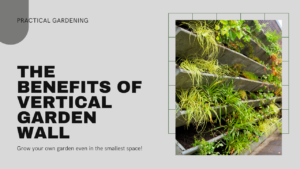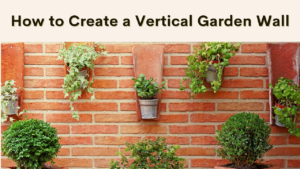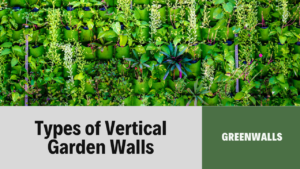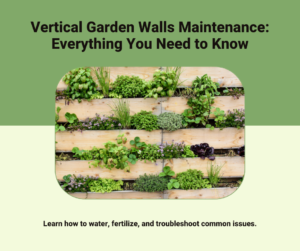
Welcome to our article on vertical garden walls, the practical solution for those with limited spaces. If you have a small balcony, a cramped patio, or even just a tiny corner in your backyard, a vertical garden wall can transform your space into a lush oasis.
Vertical garden walls are a creative way to make the most of limited areas by utilizing vertical space. They offer both aesthetic appeal and functional benefits, allowing you to enjoy the beauty of plants while optimizing your available space.
Whether you live in an apartment, a small house, or simply want to add greenery to an indoor area, a vertical garden wall is a versatile and efficient solution. Now, let’s explore why vertical garden walls are gaining popularity and how they can enhance your living environment.
Key Takeaways:
- A vertical garden wall is a practical solution for limited spaces, such as small balconies or cramped patios.
- Vertical garden walls offer both aesthetic appeal and functional benefits, transforming your space into a lush oasis.
- They are a versatile and efficient solution for anyone living in apartments or small houses.
- Vertical garden walls can enhance indoor environments, adding greenery and improving air quality.
- With a vertical garden wall, you can make the most of your available space while enjoying the beauty of plants.
What is a Vertical Garden Wall and its Benefits
A vertical garden wall is a creative and innovative way to incorporate greenery into limited spaces, both indoors and outdoors. Also known as a living wall or green wall, it is a vertical structure that is covered with various plants, creating a lush and visually appealing display.
Vertical garden walls offer numerous benefits that make them a popular choice among homeowners and businesses. Let’s explore some of these benefits:
- Enhances the Beauty of Your Space: A vertical garden wall adds a touch of natural beauty to any environment. Whether it’s a small apartment balcony or a large office lobby, the vibrant colors and textures of plants create a visually stunning focal point.
- Improves Air Quality: Plants naturally filter the air by absorbing carbon dioxide and releasing oxygen. A vertical garden wall can help improve the air quality in your space by reducing pollutants and increasing oxygen levels, resulting in cleaner and healthier indoor or outdoor air.
- Brings Nature Indoors or Outdoors: With a vertical garden wall, you can bring the beauty of nature closer to you, even if you have limited outdoor space. The calming presence of plants can create a relaxing and rejuvenating atmosphere, whether it’s in your living room, office, or garden.
- Provides Insulation and Soundproofing: The lush vegetation of a vertical garden wall acts as a natural insulator, helping to regulate temperature and reduce energy consumption. Additionally, the plants can absorb and deflect sound, making it an effective soundproofing solution for noise reduction.
- Creates a Habitat for Wildlife: Vertical garden walls can attract various forms of wildlife like butterflies, birds, and insects, contributing to biodiversity in urban areas. By providing a habitat and food source for these creatures, you can play a part in supporting local ecosystems.
- Maximizes Space Utilization: One of the significant advantages of vertical garden walls is their ability to save space. Instead of traditional horizontal gardens that require large areas, vertical gardens can be built on walls or designed as freestanding structures, making them ideal for small balconies, patios, or even interior walls.
Overall, a vertical garden wall offers a myriad of benefits that go beyond aesthetics. It enhances the beauty of your space, improves air quality, brings nature closer to you, provides insulation and soundproofing, creates habitat for wildlife, and maximizes space utilization.
“A vertical garden wall not only adds a stunning visual element but also brings a sense of tranquility and well-being into your surroundings.” – Flora Johnson, Horticulturalist
Comparison of Vertical Garden Wall Benefits
| Benefits | Vertical Garden Walls | Traditional Gardens |
|---|---|---|
| Space utilization | Maximizes space in limited areas | Requires larger areas |
| Air quality | Improves indoor/outdoor air quality | Minimal impact on air quality |
| Insulation | Provides natural insulation | Minimal insulation properties |
| Soundproofing | Effective sound absorption | Limited soundproofing abilities |
| Biodiversity | Attracts wildlife and supports ecosystems | Less impact on wildlife |
Vertical Garden Wall Design Considerations
When it comes to planning a vertical garden wall, there are several important design considerations to keep in mind. These factors will play a critical role in ensuring the success and longevity of your vertical garden. From the location to plant selection, each decision will impact the overall aesthetic appeal and functionality of your green oasis.
1. Location
Choosing the right location for your vertical garden wall is crucial. Consider the available space, whether it’s indoors or outdoors, and assess factors such as sunlight exposure, temperature, and accessibility. Analyzing these aspects will help determine whether your vertical garden will thrive and flourish in the chosen spot.
2. Sunlight Requirements
Plants have different sunlight requirements, and it’s essential to select species that are suitable for the amount of light available in your chosen location. Some plants thrive in full sun, while others prefer partial shade. Understanding the sunlight needs of your chosen greenery will ensure its health and vitality.
3. Water Drainage
Proper water drainage is crucial for the well-being of your vertical garden. To prevent water accumulation and potential damage to the wall, ensure there are adequate drainage solutions in place. This can include the installation of a drip irrigation system, the use of moisture-retaining substrates, and incorporating drainage outlets.
4. Plant Selection
Choosing the right plants for your vertical garden wall is a key consideration. Consider factors such as the size, growth habit, and water requirements of the plants. It’s important to select species that are well-suited for vertical growth and can thrive in the conditions provided by your chosen location.
5. Aesthetics
Designing a visually appealing vertical garden wall involves considering the color, texture, and arrangement of plants. Create a cohesive and harmonious display by selecting plants that complement each other in terms of foliage, bloom time, and overall aesthetic appeal.
| Design Consideration | Description |
|---|---|
| Location | Choose an appropriate space, considering factors such as sunlight exposure, temperature, and accessibility. |
| Sunlight Requirements | Assess the amount of sunlight available in the chosen location and select plants that thrive under those conditions. |
| Water Drainage | Ensure proper water drainage to prevent accumulation and potential damage to the vertical garden wall. |
| Plant Selection | Choose plants that are well-suited for vertical growth and can thrive in the conditions provided by the location. |
| Aesthetics | Create a visually appealing display by considering the color, texture, and arrangement of plants. |
By carefully considering these design factors, you can create a vertical garden wall that not only adds beauty to your space but also thrives in its environment. Keep these considerations in mind as you embark on your vertical garden journey and watch as your green oasis flourishes.
Benefits of Vertical Garden Walls as a Space-Saving Solution
Vertical garden walls offer numerous benefits, making them an ideal space-saving solution for those with limited spaces. By utilizing vertical space, both indoors and outdoors, these innovative gardens create a lush green environment without taking up valuable floor space. Let’s explore the advantages of vertical garden walls:
Create a Lush Green Oasis:
Vertical garden walls provide a stunning visual display of vibrant foliage, transforming any space into a lush green oasis. Whether you have a small balcony, courtyard, or even a living room wall, the vertical garden adds a touch of nature and beauty.
Maximize Limited Spaces:
One of the most significant benefits of vertical garden walls is their space-saving design. They allow you to make the most of limited areas that are unsuitable for traditional gardens. By going vertical, you can enjoy the beauty of plants without sacrificing precious floor space.
Improved Air Quality:
Vertical garden walls not only enhance the aesthetics but also contribute to improved air quality. Plants naturally filter and purify the air by absorbing harmful pollutants and releasing fresh oxygen. This creates a healthier and more invigorating environment for you and your loved ones.
No More Gardening Restrictions:
For those with limited mobility or physical constraints, vertical garden walls offer a convenient alternative to traditional gardening. With plants at eye level, tending to your garden becomes more accessible and enjoyable. You can engage in gardening activities without the need to bend or kneel, making it accessible for people of all ages and abilities.
Enhanced Privacy and Noise Reduction:
Vertical garden walls act as a natural barrier, enhancing privacy and reducing noise levels in outdoor areas. The dense vegetation absorbs sound waves, creating a peaceful and tranquil space. Whether you live in a busy urban area or want to create a private retreat on your balcony, vertical garden walls provide the perfect solution.
Vertical garden walls offer a practical and visually appealing solution for those with limited spaces. With their ability to maximize space, improve air quality, and add beauty, they are an excellent addition to any home or outdoor space.
Now that you understand the benefits, it’s time to explore the different types of vertical garden walls available and how to design and install them. Continue reading our guide to discover the various options and unleash the full potential of vertical gardening.
Improved Air Quality and Aesthetics with Vertical Garden Walls

Vertical garden walls not only beautify your space but also offer numerous benefits that contribute to improved air quality. These living green walls are not just aesthetically pleasing; they play a crucial role in creating a healthier and more harmonious environment.
Plants absorb pollutants and release oxygen, effectively purifying the air. By incorporating vertical garden walls into your living or working space, you can enjoy cleaner and fresher air, free from harmful toxins and pollutants. This is particularly beneficial for individuals with respiratory conditions or allergies, as it helps reduce the presence of airborne allergens and enhance overall air quality.
Moreover, vertical garden walls introduce natural elements into urban environments, fostering a connection with nature and providing a sense of calm and tranquility. Research has shown that exposure to greenery can reduce stress and anxiety, improve mood, and boost productivity. These verdant installations create a visually appealing backdrop, transforming even the smallest spaces into inviting and vibrant areas.
“Vertical garden walls are not just decorative features; they are green lungs that breathe life into our surroundings.”
– Dr. Emma Greenway, Environmental Scientist
To further emphasize the impact of vertical garden walls on air quality and aesthetics, consider the following benefits:
- Enhanced oxygen production
- Natural air filtration
- Temperature regulation
- Noise reduction
- Reduced energy consumption
When designing your vertical garden wall, choose a variety of plants that thrive indoors or in your specific climate. Combining different textures, colors, and heights will create a visually stunning and dynamic arrangement.
| Improvements with Vertical Garden Walls | Benefits |
|---|---|
| Improved Air Quality |
|
| Aesthetics |
|
Types of Vertical Garden Walls: Indoor and Outdoor Options

When it comes to vertical garden walls, there are various options available for both indoor and outdoor spaces. Whether you want to bring nature indoors or enhance the beauty of your outdoor area, there is a vertical garden wall type that suits your specific needs and preferences.
Let’s explore some popular options:
Living Walls
Living walls are a stunning and eco-friendly option for both indoor and outdoor vertical gardens. They are typically created using a variety of plants and can be customized to fit any space. These living walls not only provide a visual spectacle but also offer numerous environmental benefits, such as air purification and noise reduction.
Modular Systems
Modular systems are an excellent choice for those looking for flexibility and ease of installation. These systems consist of pre-designed panels that can be easily assembled and disassembled. With modular systems, you have the freedom to customize your vertical garden wall according to your preferences and space constraints.
Green Facades
Green facades, also known as climbing walls, are ideal for outdoor vertical gardens. These walls feature climbing plants that attach themselves to a structure or a support system. Green facades not only add a touch of greenery to your outdoor space but also provide insulation and shade, making them a practical choice for energy-efficient homes.
These are just a few examples of the diverse types of vertical garden walls available. The key is to select the type that best suits your space, style, and maintenance preferences.
| Types of Vertical Garden Walls | Indoor | Outdoor |
|---|---|---|
| Living Walls | ✅ | ✅ |
| Modular Systems | ✅ | ✅ |
| Green Facades | ❌ | ✅ |
Vertical Garden Wall Installation: Selecting the Right Location, Materials, and Tools
Installing a vertical garden wall is an exciting endeavor that can transform any space into a lush green oasis. However, careful planning and preparation are essential to ensure a successful installation. In this section, we will guide you through the process step by step, providing valuable tips on selecting the ideal location, choosing the right materials, and gathering the necessary tools.
Selecting the Right Location:
Choosing the right location for your vertical garden wall is crucial for its long-term success. Consider the following factors:
- Sunlight: Most plants require adequate sunlight to thrive. Assess the amount of sunlight your desired location receives and choose plants that are suitable for that level of exposure.
- Accessibility: Ensure that your vertical garden wall is easily accessible for maintenance and watering. Consider nearby water sources, so you don’t have to travel far to water your plants.
- Structural Integrity: Depending on the size and weight of your vertical garden wall, it’s important to ensure that the chosen location can support its installation. Consult with a professional if needed.
Choosing the Right Materials:
When it comes to vertical garden wall materials, there is a range of options to choose from. Each material has its own unique characteristics and considerations:
- Plant Pockets: These innovative pockets allow you to easily insert plants and create a beautiful vertical garden. They come in various sizes and materials, such as fabric or felt, and can be attached to walls or mounted on frames.
- Modular Systems: Modular systems consist of individual panels that can be connected together. They provide flexibility in terms of arrangement and plant selection, and some even come with built-in irrigation systems.
- Living Walls: A living wall involves covering an entire wall with a growing medium and a range of plants. This option requires a more complex installation process and may involve structural considerations.
Gathering the Essential Tools:
Before embarking on your vertical garden wall installation journey, it’s important to have the necessary tools at hand. Here are some of the essential tools you’ll need:
- Drill: A drill with the appropriate drill bits will be essential for securing brackets, frames, and pockets to the wall.
- Level: A level will help ensure that your vertical garden wall is straight and properly aligned.
- Tape Measure: Accurate measurements are crucial for determining the spacing between plants and ensuring an even installation.
- Screwdriver: A screwdriver will be needed to secure screws and hardware during the installation process.
- Pencil: Use a pencil to mark the positions where brackets or frames will be installed, ensuring precision and accuracy.
By carefully considering the location, selecting the right materials, and gathering the essential tools, you’ll be well-prepared to install your vertical garden wall. The next section will focus on the maintenance of your vertical garden wall, including watering and fertilizing tips, as well as common issues and troubleshooting.
Maintenance of Vertical Garden Walls: Watering and Fertilizing Tips, Common Issues and Troubleshooting

Proper maintenance is crucial for the health and sustainability of your vertical garden walls. In this section, we will explore essential watering and fertilizing tips, as well as common issues that may arise and troubleshooting techniques to help you maintain a thriving vertical garden.
Watering Tips
When it comes to watering your vertical garden, it’s important to find the right balance. Overwatering can lead to root rot and other issues, while underwatering can cause plant stress and hinder growth. Follow these tips to ensure your plants receive adequate hydration:
- Check the moisture level: Use a moisture meter or insert your finger into the soil to determine if it’s time to water. If the top inch of soil feels dry, it’s time to water.
- Water deeply: Give your vertical garden a thorough watering to ensure moisture reaches all the plants in the system. Allow the water to penetrate the soil and drain properly.
- Consider the weather conditions: Adjust your watering schedule based on weather conditions. During hot and dry periods, you may need to water more frequently, while cooler and rainy seasons may require less frequent watering.
- Observe plant behavior: Pay attention to how your plants respond to watering. Wilting leaves may indicate underwatering, while yellowing or droopy leaves may indicate overwatering.
Fertilizing Tips
In addition to regular watering, proper fertilizing is essential for the health and vigor of your vertical garden. Follow these tips to provide adequate nutrients to your plants:
- Choose the right fertilizer: Select a balanced fertilizer formulated for the specific types of plants in your vertical garden. Look for a fertilizer with equal ratios of nitrogen (N), phosphorus (P), and potassium (K).
- Follow the instructions: Read the instructions on the fertilizer packaging and follow the recommended dosage and frequency. Over-fertilizing can burn plants and harm their roots.
- Apply during the growing season: Fertilize your vertical garden during the active growing season to support plant growth and development. Avoid fertilizing during dormant periods.
- Consider organic options: Organic fertilizers provide a natural and sustainable option for nourishing your vertical garden. Look for organic fertilizers that are rich in nutrients and free from synthetic chemicals.
Common Issues and Troubleshooting
Despite your best efforts, problems may arise in your vertical garden. Here are some common issues you may encounter and troubleshooting techniques to address them:
“My plants are turning yellow.”
Yellowing leaves can indicate nutrient deficiencies, overwatering, or poor drainage. Check the soil moisture level, adjust your watering schedule, and consider adding a balanced fertilizer to address nutrient deficiencies.
“I have pests in my vertical garden.”
Pests can wreak havoc on your plants. Identify the specific pests you’re dealing with and explore organic pest control methods such as neem oil, insecticidal soap, or introducing beneficial insects like ladybugs or lacewings.
“My plants are not thriving.”
If your plants are not growing well or showing signs of poor health, reassess your watering and fertilizing practices. Ensure adequate sunlight, proper drainage, and healthy planting materials to promote optimal growth.
By following these watering and fertilizing tips and addressing common issues promptly, you can ensure the longevity and vibrancy of your vertical garden walls.
| Common Issues | Troubleshooting Techniques |
|---|---|
| Poor Drainage | Check the drainage system for clogs or blockages, and ensure proper soil composition for optimal drainage. |
| Plant Wilting | Adjust watering schedule, ensuring soil moisture levels are consistent and providing sufficient hydration. |
| Yellowing Leaves | Check nutrient levels in the soil and consider adjusting fertilization practices to address any deficiencies. |
| Insect Infestation | Identify the specific pests and implement organic pest control methods to protect your plants. |
| Unhealthy Plant Growth | Assess sunlight exposure, check for proper airflow, and review watering and fertilizing practices to promote healthy growth. |
FAQ
Q. What is a Vertical Garden Wall and its Benefits?
A. A vertical garden wall is a structure designed to grow plants vertically, either indoors or outdoors, using walls or dedicated structures. The benefits of a vertical garden wall include space-saving, improved air quality, and enhanced aesthetics.
Q. What are the Design Considerations for a Vertical Garden Wall?
A. When planning a vertical garden wall, it is important to consider factors such as the location, sunlight requirements, water drainage, and plant selection. These considerations will ensure the success and thriving of your vertical garden.
Q. How does a Vertical Garden Wall Save Space?
A. Vertical garden walls provide a space-saving solution by utilizing vertical space instead of occupying floor space. This allows individuals with limited spaces to have a lush green environment without compromising on space.
Q. How Do Vertical Garden Walls Improve Air Quality and Aesthetics?
A. Vertical garden walls play a crucial role in improving air quality by absorbing pollutants and releasing oxygen. Additionally, they enhance aesthetics by adding a touch of nature indoors or outdoors, creating a visually pleasing environment.
Q. What Types of Vertical Garden Walls are Available?
A. Vertical garden walls come in various types, including living walls and modular systems. These options cater to both indoor and outdoor spaces, offering versatile solutions based on individual needs and preferences.
Q. How Do I Install a Vertical Garden Wall?
A. To install a vertical garden wall, you need to select the right location that receives adequate sunlight, gather the necessary materials, and use appropriate tools. Proper installation ensures the stability and functionality of the vertical garden.
Q. How Do I Maintain a Vertical Garden Wall?
A. Maintenance of a vertical garden wall involves regular watering and fertilizing to provide the necessary nutrients for plant growth. Common issues such as pests or plant diseases may arise, but troubleshooting tips are available to address these challenges.
Conclusion
Vertical garden walls are an ideal solution for small spaces, offering both practical and aesthetic benefits. These green installations have the power to enhance air quality, add a touch of nature, and maximize space utilization in your home. With their innovative design, they provide an inspiring and visually appealing addition to any living space.
By incorporating vertical garden walls into your home, you can create a green oasis that brings nature indoors. Whether you have limited outdoor space or prefer to have a living work of art on your interior walls, vertical garden walls offer a creative way to liven up your surroundings.
Let your imagination run wild when it comes to vertical garden wall ideas. Explore different plant arrangements, textures, and color combinations to achieve a unique and personalized design. From vertical herb gardens in your kitchen to stunning living walls in your living room, the possibilities are endless.
Transform your small space into a vibrant and refreshing environment with vertical garden walls. Experience the benefits of improved air quality, the beauty of nature, and the clever use of limited space. Incorporate these inspiring vertical garden wall ideas into your home and create a tranquil sanctuary that you can enjoy every day.
















